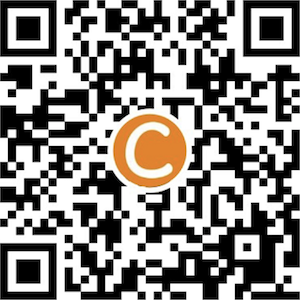没有合适的资源?快使用搜索试试~ 我知道了~
首页IEEE 802.15.4-2011:低速率无线个人区域网络标准详解
IEEE 802.15.4-2011:低速率无线个人区域网络标准详解
需积分: 10 5 下载量 60 浏览量
更新于2024-07-22
收藏 2.6MB PDF 举报
"zigbee最新2011标准"
Zigbee是一种基于IEEE 802.15.4标准的无线通信技术,主要用于低速率、低功耗的无线个人区域网络(LR-WPANs)。2011年的更新是Zigbee技术的重要里程碑,对原有的2006版标准进行了修订,以适应不断变化的技术需求和市场环境。
IEEE 802.15.4标准是定义低速率无线个人区域网络操作规范的国际标准,由IEEE计算机学会的局域网/城域网标准委员会赞助制定。该标准主要关注的是那些需要简单、可靠且经济有效的短距离无线通信的应用,如家庭自动化、传感器网络、物联网(IoT)设备等。
2011版的IEEE 802.15.4标准在多个方面进行了改进,包括:
1. **性能提升**:提高了数据传输速率和网络容量,支持更高的数据速率,以满足更多数据密集型应用的需求。
2. **安全性增强**:加强了网络的安全性,引入了更先进的加密算法,如AES-128,以保护数据不被窃取或篡改。
3. **网络管理优化**:改进了网络的组织和管理,包括路由算法、网络拓扑结构和设备的角色定义,以提高网络的稳定性和可靠性。
4. **功耗控制**:进一步优化了低功耗模式,使得电池供电的设备能有更长的使用寿命,这对于无线传感器网络尤其重要。
5. **兼容性与互操作性**:确保与之前版本的兼容性,同时增强了不同Zigbee设备之间的互操作性,以便于构建更大规模的混合网络。
6. **多频道支持**:增加了可用频道的数量,减少了频道间的干扰,提高了网络的效率。
7. **增强的网络层**:更新了网络层协议,如网络层安全、网络层路由和网络管理,以支持更大的网络规模和更复杂的网络结构。
8. **应用框架**:提供了更灵活的应用框架,使开发人员能够更容易地将Zigbee技术集成到各种各样的产品中。
"zigbee最新2011标准"不仅提升了Zigbee网络的性能和安全性,还增强了其在网络管理和设备兼容性方面的功能,这使得Zigbee在智能家居、工业自动化、医疗保健等多个领域中的应用更加广泛和实用。对于开发者来说,理解并掌握这一标准至关重要,能够帮助他们构建出更高效、更安全的无线网络系统。

xiv Copyright © 2011 IEEE. All rights reserved.
12.3.3 Symbol rate................................................................................................................ 175
12.3.4 Receiver sensitivity.................................................................................................... 175
12.3.5 Receiver interference rejection .................................................................................. 176
12.3.6 TX-to-RX turnaround time ........................................................................................ 176
12.3.7 RX-to-TX turnaround time ........................................................................................ 176
12.3.8 Error vector magnitude (EVM).................................................................................. 176
12.3.9 Transmit center frequency tolerance.......................................................................... 176
12.3.10 Transmit power.......................................................................................................... 176
12.3.11 Receiver maximum input level of desired signal....................................................... 176
12.3.12 Receiver ED............................................................................................................... 177
12.3.13 Link quality indicator (LQI) ...................................................................................... 177
12.3.14 Clear channel assessment (CCA)............................................................................... 177
12.3.15 Example of PSSS encoding ....................................................................................... 177
13. Chirp spread spectrum (CSS) PHY ................................................................................................. 179
13.1 CSS PPDU format ................................................................................................................... 179
13.1.1 Preamble .................................................................................................................... 179
13.1.2 SFD field.................................................................................................................... 179
13.1.3 PHY header (PHR) .................................................................................................... 180
13.2 Modulation and spreading ....................................................................................................... 180
13.2.1 Data rates ................................................................................................................... 180
13.2.2 Reference modulator diagram.................................................................................... 180
13.2.3 De-multiplexer (DEMUX)......................................................................................... 180
13.2.4 Serial-to-parallel mapping ......................................................................................... 181
13.2.5 Data-symbol-to-bi-orthogonal-codeword mapping ................................................... 181
13.2.6 Parallel-to-serial converter and QPSK symbol mapping........................................... 184
13.2.7 DQPSK coding .......................................................................................................... 184
13.2.8 DQPSK-to-DQCSK modulation................................................................................ 185
13.2.9 CSK generator............................................................................................................ 185
13.2.10 Bit interleaver ............................................................................................................ 186
13.3 Waveform and subchirp sequences.......................................................................................... 186
13.3.1 Graphical presentation of chirp symbols (subchirp sequences)................................. 186
13.3.2 Active usage of time gaps.......................................................................................... 186
13.3.3 Mathematical representation of the continuous time CSS base-band signal ............. 188
13.3.4 Raised cosine window for chirp pulse shaping.......................................................... 189
13.3.5 Subchirp transmission order ...................................................................................... 190
13.3.6 Example of CSK signal generation............................................................................ 190
13.4 CSS RF requirements............................................................................................................... 191
13.4.1 Transmit power spectral density (PSD) mask and signal tolerance........................... 191
13.4.2 Symbol rate................................................................................................................ 191
13.4.3 Receiver sensitivity.................................................................................................... 191
13.4.4 Receiver interference rejection .................................................................................. 192
13.4.5 TX-to-RX turnaround time ........................................................................................ 192
13
.4.6 RX-to-TX turnaround time ........................................................................................ 193
13.4.7 Transmit center frequency tolerance.......................................................................... 193
13.4.8 Transmit power.......................................................................................................... 193
13.4.9 Receiver maximum input level of desired signal....................................................... 193
13.4.10 Receiver ED............................................................................................................... 193
13.4.11 Link quality indicator (LQI) ...................................................................................... 193
13.4.12 Clear channel assessment (CCA)............................................................................... 193

Copyright © 2011 IEEE. All rights reserved. xv
14. UWB PHY ....................................................................................................................................... 194
14.1 General..................................................................................................................................... 194
14.2 UWB PPDU format ................................................................................................................. 194
14.2.1 PPDU encoding process............................................................................................. 195
14.2.2 UWB PHY symbol structure ..................................................................................... 196
14.2.3 PSDU timing parameters ........................................................................................... 197
14.2.4 Preamble timing parameters ...................................................................................... 200
14.2.5 SHR preamble............................................................................................................ 202
14.2.6 PHY header (PHR) .................................................................................................... 205
14.2.7 Data field.................................................................................................................... 207
14.3 UWB PHY modulation............................................................................................................ 207
14.3.1 UWB PHY modulation mathematical framework..................................................... 207
14.3.2 UWB PHY spreading................................................................................................. 208
14.3.3 UWB PHY forward error correction (FEC) .............................................................. 209
14.4 UWB PHY RF requirements ................................................................................................... 211
14.4.1 Operating frequency bands ........................................................................................ 211
14.4.2 Channel assignments.................................................................................................. 213
14.4.3 Regulatory compliance .............................................................................................. 213
14.4.4 Operating temperature range ..................................................................................... 213
14.4.5 Baseband impulse response ....................................................................................... 213
14.4.6 Transmit PSD mask ................................................................................................... 214
14.4.7 Chip rate clock and chip carrier alignment................................................................ 215
14.4.8 TX-to-RX turnaround time ........................................................................................ 215
14.4.9 RX-to-TX turnaround time ........................................................................................ 215
14.4.10 Transmit center frequency tolerance.......................................................................... 215
14.4.11 Transmit power.......................................................................................................... 215
14.4.12 Receiver maximum input level of desired signal....................................................... 215
14.4.13 Receiver ED............................................................................................................... 215
14.4.14 Link quality indicator (LQI) ...................................................................................... 216
14.4.15 Clear channel assessment (CCA)............................................................................... 216
14.5 UWB PHY optional pulse shapes............................................................................................ 216
14.5.1 UWB PHY optional chirp on UWB (CoU) pulses .................................................... 216
14.5.2 UWB PHY optional continuous spectrum (CS) pulses ............................................. 217
14.5.3 UWB PHY linear combination of pulses (LCP)........................................................ 219
14.6 Extended preamble for optional UWB CCA mode ................................................................. 219
14.7 Ranging.................................................................................................................................... 220
14.7.1 Ranging counter......................................................................................................... 220
14.7.2 Crystal characterization ............................................................................................. 220
14.7.3 Ranging FoM ............................................................................................................. 221
15. GFSK PHY ...................................................................................................................................... 223
15.1 PPDU formats.......................................................................................................................... 223
15.2 Modulation............................................................................................................................... 223
15.2.1 GFSK PHY data rates................................................................................................ 223
15.2.2 Reference modulator diagram.................................................................................... 223
15.2.3 Data whitening........................................................................................................... 223
15.2.4 GFSK modulation...................................................................................................... 224
15.3 GFSK PHY RF requirements .................................................................................................. 224
15.3.1 Operating frequency range......................................................................................... 224
15.3.2 Transmit PSD mask ................................................................................................... 224
15.3.3 Symbol rate................................................................................................................ 224
15.3.4 Receiver sensitivity.................................................................................................... 225

xvi Copyright © 2011 IEEE. All rights reserved.
15.3.5 Receiver interference rejection .................................................................................. 225
15.3.6 TX-to-RX turnaround time ........................................................................................ 225
15.3.7 RX-to-TX turnaround time ........................................................................................ 225
15.3.8 Transmit center frequency tolerance.......................................................................... 225
15.3.9 Transmit power.......................................................................................................... 225
15.3.10 Receiver maximum input level of desired signal....................................................... 225
15.3.11 Receiver ED............................................................................................................... 225
15.3.12 Link quality indicator (LQI) ...................................................................................... 226
15.3.13 Clear channel assessment (CCA)............................................................................... 226
Annex A (informative) Bibliography .......................................................................................................... 227
Annex B (normative) CCM* mode of operation ......................................................................................... 229
B.1 Introduction.............................................................................................................................. 229
B.2 Notation and representation..................................................................................................... 229
B.2.1 Strings and string operations........................................................................................ 229
B.2.2 Integers, octets, and their representation ..................................................................... 229
B.3 Symmetric-key cryptographic building blocks........................................................................ 229
B.3.1 Block cipher................................................................................................................. 230
B.3.2 Mode of operation........................................................................................................ 230
B.4 Specification of generic CCM* mode of operation ................................................................. 230
B.4.1 CCM* mode encryption and authentication transformation........................................ 230
B.4.1.1 Input transformation .................................................................................... 231
B.4.1.2 Authentication transformation ..................................................................... 231
B.4.1.3 Encryption transformation ........................................................................... 232
B.4.2 CCM* mode decryption and authentication checking transformation ........................ 232
B.4.2.1 Decryption transformation........................................................................... 233
B.4.2.2 Authentication checking transformation...................................................... 233
B.4.3 Restrictions .................................................................................................................. 233
Annex C (informative) Test vectors for cryptographic building blocks...................................................... 235
C.1 AES block cipher..................................................................................................................... 235
C.2 Mode of operation.................................................................................................................... 235
C.2.1 MAC beacon frame...................................................................................................... 235
C.2.1.1 Description................................................................................................... 235
C.2.1.2 CCM* mode encryption and authentication transformation........................ 235
C.2.1.3 CCM* mode decryption and authentication checking transformation ........ 237
C.2.2 MAC data frame .......................................................................................................... 239
C.2.2.1 Description................................................................................................... 239
C.2.2.2 CCM* mode encryption and authentication transformation........................ 239
C.2.2.3 CCM* mode decryption and authentication checking transformation ........ 241
C.2.3 MAC command frame ................................................................................................. 243
C.2.3.1 Description................................................................................................... 243
C.2.3.2 CCM* mode encryption and authentication transformation........................ 243
C.2.3.3 CCM* mode decryption and authentication checking transformation ........ 245
Annex D (informative) Protocol implementation conformance statement (PICS) proforma...................... 248
D.1 Introduction.............................................................................................................................. 248
D.1.1 Scope............................................................................................................................ 248
D.1.2 Purpose......................................................................................................................... 248
D.2 Abbreviations and special symbols.......................................................................................... 248

Copyright © 2011 IEEE. All rights reserved. xvii
D.3 Instructions for completing the PICS proforma....................................................................... 249
D.4 Identification of the implementation........................................................................................ 249
D.5 Identification of the protocol ................................................................................................... 250
D.6 Global statement of conformance ............................................................................................ 250
D.7 PICS proforma tables............................................................................................................... 251
D.7.1 Functional device types ............................................................................................... 251
D.7.2 Major capabilities for the PHY.................................................................................... 251
D.7.2.1 PHY functions.............................................................................................. 251
D.7.2.2 Radio frequency (RF) .................................................................................. 252
D.7.2.3 Channel capabilities for UWB PHY............................................................ 252
D.7.3 Major capabilities for the MAC sublayer .................................................................... 255
D.7.3.1 MAC sublayer functions.............................................................................. 255
D.7.3.2 MAC frames ................................................................................................ 256
Annex E (informative) Location topics ....................................................................................................... 258
E.1 Overview.................................................................................................................................. 258
E.1.1 Two-way ranging......................................................................................................... 258
E.1.2 Position awareness through one-way transmissions.................................................... 260
E.1.3 The ranging counter..................................................................................................... 260
E.1.4 Accounting for signal arrival time............................................................................... 261
E.1.4.1 Leading edge search during the acquisition preamble................................. 261
E.1.4.2 FoM for bad times........................................................................................ 262
E.1.4.3 Other opportunities for leading edge search refinement.............................. 262
E.1.4.4 Managing the preamble length for leading edge search .............................. 262
E.1.4.5 PHY deferral of the computations for leading edge search ......................... 262
E.1.4.6 PHY deferral of the computations for self-calibration ................................ 263
E.1.5 Management of crystal offsets..................................................................................... 263
E.1.5.1 Characterizing crystal offsets with digital tracking loops ........................... 264
E.1.5.2 Characterizing crystal offsets with analog tracking loops ........................... 264
E.1.5.3 Characterizing crystal offsets with different tracking loops ........................ 264
E.1.5.4 Size of units ................................................................................................. 265
E.1.6 Accounting for internal propagation paths .................................................................. 265
E.1.6.1 PIB attributes for internal propagation paths............................................... 266
E.1.6.2 Support for self-calibration and one-way ranging ....................................... 266
E.1.6.3 Use of the calibrate primitives..................................................................... 266
E.1.6.4 Use of the COMPUTATION_NEEDED status........................................... 266
E.1.7 Timestamp reports ....................................................................................................... 267
E.1.7.1 Presentation of timestamp reports................................................................ 267
E.1.7.2 Start and stop times in the timestamp report................................................ 267
E.1.8 Private ranging............................................................................................................. 267
E.1.8.1 Simple encryption of the timestamp reports................................................ 267
E.1.8.2 Dynamic preamble selection (DPS)............................................................. 267
E.2 Time-of-arrival estimation from channel sounding ................................................................. 268
E.3 Time-of-arrival estimation in non-line-of-sight (NLOS) conditions....................................... 270
E.4 Asynchronous ranging ............................................................................................................. 271
E.4.1 Two-way ranging (TWR) ............................................................................................ 272
E.4.2 Symmetric double-sided two-way ranging (SDS-TWR)............................................. 273
E.5 Location estimation from range data ....................................................................................... 274
E.5.1 Time of arrival ............................................................................................................. 275
E.5.2 Time difference of arrival
............................................................................................ 276
E.5.2.1 Mode 1 ......................................................................................................... 276
E.5.2.2 Mode 2 ......................................................................................................... 276

xviii Copyright © 2011 IEEE. All rights reserved.
E.6 Network location algorithms ................................................................................................... 276
E.6.1 Ad hoc algorithms........................................................................................................ 277
E.6.2 Centralized algorithms................................................................................................. 279
E.6.3 Convex optimization algorithms.................................................................................. 280
E.6.4 Location estimation using multipath delays ................................................................ 282
Annex F (informative) Example UWB PHY transmit data frame encoding............................................... 284
F.1 Channel used in the example ................................................................................................... 284
F.2 Encoding progression .............................................................................................................. 284
F.2.1 Transmit PSDU............................................................................................................ 284
F.2.2 PSDU bits .................................................................................................................... 284
F.2.3 Reed-Solomon encoded bits ........................................................................................ 284
F.2.4 Convolutional encoder input bits................................................................................. 285
F.2.5 Convolutional encoder output bits............................................................................... 285
F.2.6 Scrambler output bits................................................................................................... 285
F.2.7 Ternary output symbols ............................................................................................... 286
Annex G (informative) MPSK PHY............................................................................................................ 289
G.1 General..................................................................................................................................... 289
G.2 780 MHz band data rates ......................................................................................................... 289
G.3 Modulation and spreading ....................................................................................................... 289
G.3.1 Reference modulator diagram...................................................................................... 289
G.3.2 Bit-to-symbol mapping................................................................................................ 289
G.3.3 Symbol-to-chip mapping ............................................................................................. 290
G.3.4 Pre-processing.............................................................................................................. 291
G.3.5 PSK modulation........................................................................................................... 291
G.3.6 Pulse shape................................................................................................................... 291
G.3.7 Chip transmission order............................................................................................... 292
G.4 MPSK PHY RF requirements.................................................................................................. 292
G.4.1 Transmit power............................................................................................................ 292
G.4.2 Operating frequency range........................................................................................... 292
G.4.3 Transmit PSD mask ..................................................................................................... 292
G.4.4 Symbol rate.................................................................................................................. 292
G.4.5 Receiver sensitivity...................................................................................................... 292
G.4.6 Receiver interference rejection .................................................................................... 293
Annex H (informative) Considerations for the 950 MHz band ................................................................... 294
H.1 General..................................................................................................................................... 294
H.2 Listen before talk (LBT) considerations.................................................................................. 294
剩余313页未读,继续阅读
805 浏览量
2023-06-07 上传
点击了解资源详情
183 浏览量
163 浏览量
点击了解资源详情
点击了解资源详情
点击了解资源详情
点击了解资源详情
rikeycf
- 粉丝: 0
上传资源 快速赚钱
 我的内容管理
展开
我的内容管理
展开
 我的资源
快来上传第一个资源
我的资源
快来上传第一个资源
 我的收益 登录查看自己的收益
我的收益 登录查看自己的收益 我的积分
登录查看自己的积分
我的积分
登录查看自己的积分
 我的C币
登录后查看C币余额
我的C币
登录后查看C币余额
 我的收藏
我的收藏  我的下载
我的下载  下载帮助
下载帮助

最新资源
- Docker实现Redis集群:打造高可用Nosql数据库方案
- 133款实用文件小图标的深度解析与应用
- TES光束线优化技术深入解析
- TH7122无线收发信机小型化设计方案
- 多用途字模提取与动画模拟软件发布
- MDBPlus软件:轻量级无需安装的MDB数据库读取工具
- 相见欢友情链接系统ASPX版 v1.0发布
- 电脑产品与建站模板免费下载资源
- 实现PB按钮变色效果的简便方法
- 搜狗输入法绝版机械键盘音效皮肤揭秘
- 51 AVR单片机USB ISP下载器驱动及软件下载
- 环境目标调查表Excel模板免费下载
- 全面掌握界面美化软件开发—FlatStyle源码解析
- Java简易下载器源代码分享
- 高效毕业设计答辩PPT模板推荐
- DEX2JAR: 将DEX文件转换为JAR的反编译解决方案
安全验证
文档复制为VIP权益,开通VIP直接复制
 信息提交成功
信息提交成功 扫码关注,限时领取CSDN余额


























